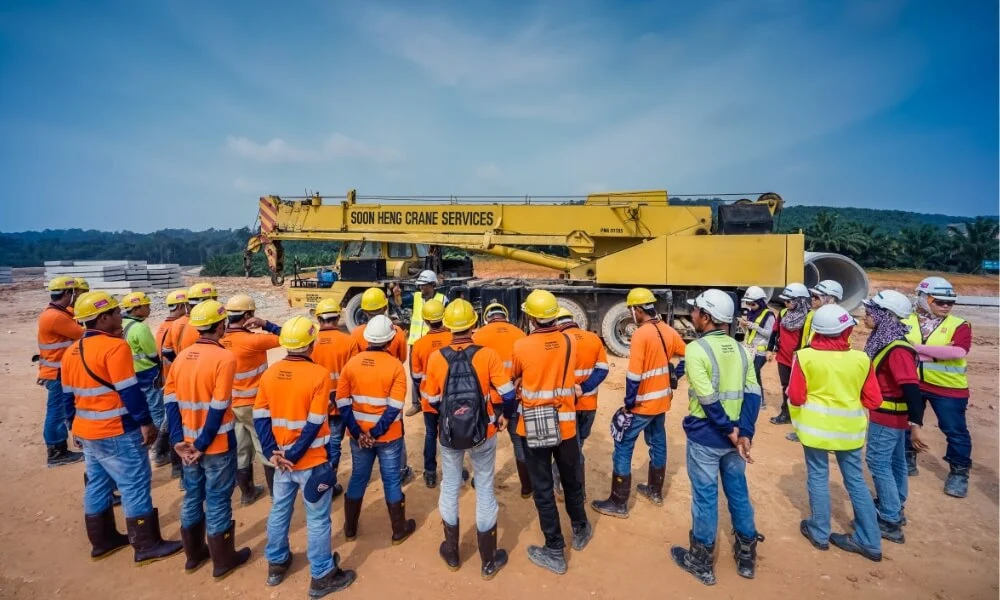In any workplace, safety should be a top priority. Accidents and injuries not only harm workers but can also result in lost productivity, increased costs, and damage to a company’s reputation. One effective way to promote safety in the workplace is through toolbox talks. Toolbox talks are short, informal safety meetings that allow workers and supervisors to discuss specific safety topics and identify potential hazards.
In this blog, we will explore 12 reasons toolbox talks are important for safety in the workplace, including how they can improve communication, boost morale, increase productivity, and save money. By understanding the importance of toolbox talks, supervisors and workers can work together to promote a safety culture and prevent workplace accidents and injuries.
What is Toolbox Talk?
A Toolbox Talk is a short safety meeting or training session typically held before a work shift or task starts. A Toolbox Talk aims to raise awareness of potential hazards and promote safe work practices among employees. These talks are usually led by a supervisor or a safety professional and are intended to be interactive and participatory.
Toolbox Talks can cover a wide range of topics related to workplace safety, such as hazard recognition, personal protective equipment, emergency procedures, and job-specific safety requirements. They are an important tool for creating a workplace safety culture and promoting employee engagement in safety programs. Toolbox Talks are often used in construction, manufacturing, and oil and gas industries, where hazards are prevalent, and safety is a critical concern.
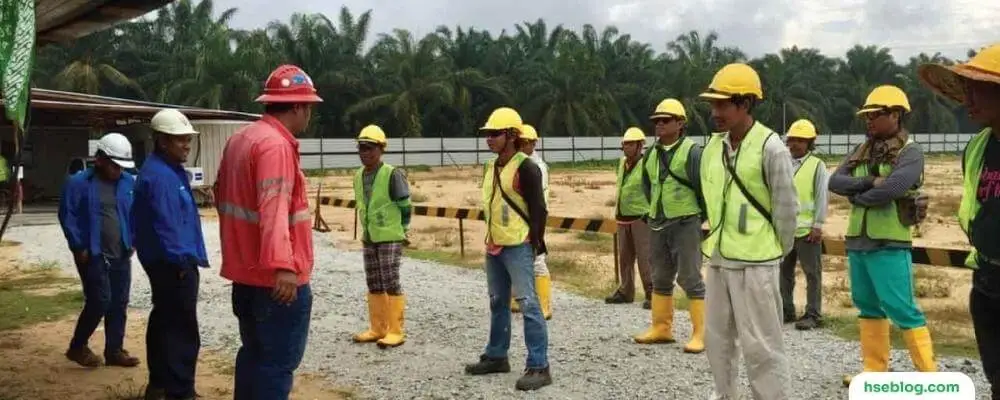
Why Toolbox Talks Are Important for Safety?
Toolbox talks are short, informal safety meetings supervisors and workers hold to discuss relevant safety issues, hazards, and best practices. These talks are an essential component of any safety program, and here are 12 reasons why:
1. Increase Awareness
The first reason why toolbox talks are important for safety is that they increase workers’ awareness of potential hazards and the importance of following safety procedures. Toolbox talks help workers identify potential workplace hazards and understand how to avoid them. By discussing specific safety topics and real-life scenarios, workers can learn to recognize potential hazards and take appropriate action to prevent accidents.
For example, suppose workers are regularly reminded of the dangers of working at heights during a toolbox talk. In that case, they are more likely to take necessary precautions when working on elevated platforms, such as wearing appropriate personal protective equipment (PPE) and using guardrails. This awareness can also make workers more proactive in reporting hazards and unsafe working conditions to their supervisors.
2. Reinforce Safety Rules
Reinforcing safety rules is an important part of any workplace safety program, and toolbox talks provide an opportunity to do so. During toolbox talks, supervisors can remind workers of the importance of following safety rules and regulations and explain why they are necessary. Reinforcing safety rules and regulations through toolbox talks makes it easier for workers to remember and follow them, reducing the likelihood of accidents and injuries.
For instance, if workers are reminded during toolbox talks about the importance of wearing appropriate PPE while working in hazardous areas, they are more likely to comply with the safety rule. This can prevent injuries caused by hazards that require PPE, such as eye injuries from flying debris or respiratory problems from exposure to hazardous fumes.
Moreover, reinforcing safety rules and regulations through toolbox talks can help to ensure that all workers are on the same page regarding safety requirements. This consistency can help to prevent confusion and ensure that everyone follows the same safety rules and protocols, regardless of their position or level of experience.
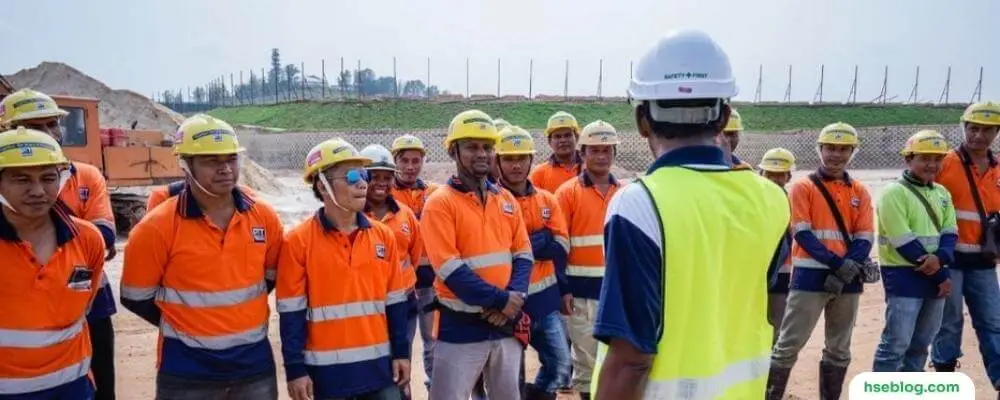
3. Encourage Discussion
Encouraging open discussion is another important aspect of toolbox talks. Toolbox talks provide a forum for workers and supervisors to share their experiences and knowledge about workplace safety. By discussing specific safety topics, workers can learn from one another and identify new ways to stay safe on the job.
During toolbox talks, workers can ask questions, clarify safety procedures, and share their experiences with hazards and near-misses. This open discussion can help to identify potential hazards that may have been overlooked, leading to a safer workplace.
Furthermore, toolbox talks can encourage workers to report any unsafe conditions, which can help prevent accidents and injuries. By giving workers a voice in safety discussions, they feel empowered to speak up and share their observations, leading to a more proactive approach to safety in the workplace.
In addition, open discussion during toolbox talks can help to improve communication between workers and supervisors. By understanding each other’s concerns and needs, workers and supervisors can work together to solve workplace safety challenges and implement effective safety protocols.
4. Improve Communication
Improving communication is an important aspect of any workplace safety program, and toolbox talks provide an opportunity to do so. During toolbox talks, workers and supervisors can discuss safety issues and concerns, share ideas and experiences, and clarify safety procedures.
By improving communication, workers and supervisors can better understand each other’s perspectives and concerns, leading to a more collaborative approach to safety in the workplace. This can help to build trust and foster a culture of safety where everyone works together to identify and address potential hazards.
Effective communication during toolbox talks can also help ensure everyone is on the same page regarding safety requirements and procedures. This can help prevent confusion and ensure that all workers understand what is expected of them regarding safety.
Furthermore, improving communication through toolbox talks can help workers feel comfortable reporting unsafe conditions or potential hazards. By creating an open and non-judgmental environment for safety discussions, workers are more likely to speak up and share their observations, leading to a safer workplace.

5. Boost Morale
Toolbox talks can boost morale by showing workers that their safety is a top priority and that management cares about their well-being. Workers who feel that their employers value their safety are more likely to feel motivated and engaged in their work.
Supervisors can demonstrate their commitment to keeping workers safe by holding regular toolbox talks and showing they are actively working to prevent accidents and injuries. This can create a sense of trust and loyalty among workers, leading to a more positive workplace culture.
Moreover, toolbox talks can be an opportunity to recognize and appreciate workers prioritising safety. This recognition can help boost morale and encourage workers to prioritize safety in their daily tasks.
In addition, toolbox talks can provide a forum for workers to express any safety concerns. When workers feel that their concerns are being heard and addressed, they are more likely to feel valued and supported, leading to a more positive attitude towards their work and workplace.
6. Promote Accountability
Promoting accountability is essential to any workplace safety program, and toolbox talks provide an opportunity to do so. By holding workers accountable for their own safety and the safety of their colleagues, supervisors can create a culture where safety is a shared responsibility.
During toolbox talks, supervisors can discuss the importance of following safety rules and regulations and reinforce the idea that everyone has a role in preventing accidents and injuries. By encouraging workers to speak up and report unsafe conditions, supervisors can promote a culture of safety where everyone is responsible for identifying and addressing potential hazards.
Furthermore, toolbox talks can help workers understand the consequences of unsafe behaviour or failure to follow safety protocols. By holding workers accountable for their actions, supervisors can create a culture where safety is taken seriously, and workers are motivated to prioritize safety in their work.
In addition, promoting accountability through toolbox talks can help to prevent complacency and ensure that workers remain vigilant and focused on safety at all times. By emphasizing the importance of following safety procedures and encouraging workers to hold themselves and their colleagues accountable, supervisors can create a culture where safety is a top priority.
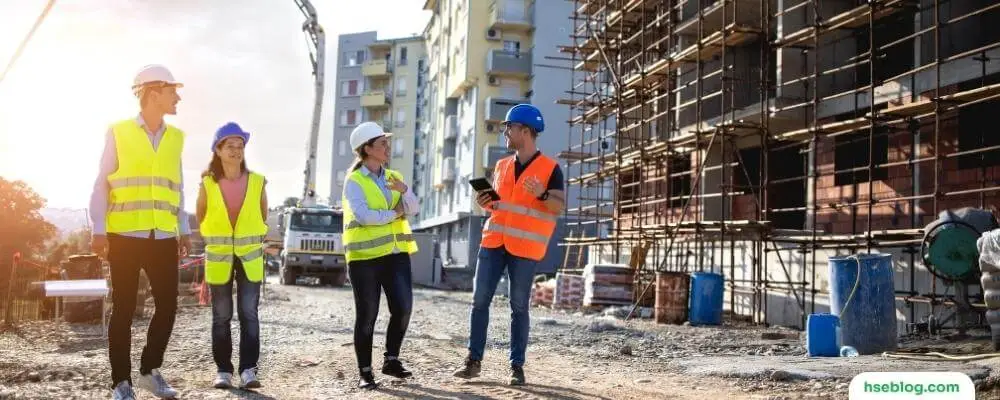
7. Reduce Accidents
One of the main goals of any workplace safety program is to reduce accidents, and toolbox talks can help to achieve this goal. By providing workers with the knowledge and tools they need to stay safe on the job, supervisors can help to prevent accidents and injuries.
During toolbox talks, supervisors can discuss specific safety topics and provide workers with hands-on learning experiences. This can include demonstrating the proper use of personal protective equipment (PPE), explaining the correct procedures for handling hazardous materials or discussing safe work practices for specific job tasks.
By providing workers with this information, supervisors can help to increase their awareness of potential hazards and reduce the likelihood of accidents and injuries. Workers properly trained and informed about safety procedures are better equipped to recognize potential hazards and take the necessary steps to prevent accidents.
Furthermore, toolbox talks can provide an opportunity to identify and address potential hazards before they lead to accidents. Supervisors can proactively identify and address potential hazards by encouraging workers to report any unsafe conditions before they cause harm.
8. Enhance Training
Toolbox talks can enhance training by providing workers with hands-on learning experiences that help them better understand safety procedures. By providing workers with regular training opportunities, supervisors can ensure that they are properly trained to work safely and prevent accidents and injuries.
During toolbox talks, supervisors can demonstrate the correct procedures for using equipment and machinery, handling hazardous materials, and following safety protocols. By providing workers with this hands-on learning experience, supervisors can help to ensure that workers understand the correct procedures and are confident in their ability to follow them.
Moreover, toolbox talks allow workers to ask questions and clarify safety procedures. This can help to ensure that workers have a clear understanding of safety requirements and can follow them correctly.
In addition, toolbox talks can help to reinforce safety training that workers have received in the past. By discussing specific safety topics and providing examples of why safety procedures are important, supervisors can help workers to remember important safety training and apply it to their work.

9. Increase Productivity
Toolbox talks can increase productivity by reducing the number of accidents and injuries that can lead to downtime and lost workdays. When workers are properly trained and informed about safety procedures, they are more likely to work efficiently and effectively, increasing productivity.
By providing workers with regular training opportunities and discussing specific safety topics during toolbox talks, supervisors can help to ensure that workers are knowledgeable and confident in their ability to work safely. This can reduce the likelihood of accidents and injuries, leading to lost workdays and decreased productivity.
Moreover, when workers feel that their safety is a top priority, they are more likely to feel motivated and engaged. This can lead to increased productivity and better-quality work.
In addition, when workers are trained to work safely, they are less likely to damage equipment or materials, leading to fewer delays and less downtime. This can further increase productivity and reduce the costs of repairing and replacing damaged equipment.
10. Save Money
Toolbox talks can save money by reducing the costs associated with accidents and injuries in the workplace. When workers are properly trained and informed about safety procedures, they are less likely to be involved in accidents and injuries that can lead to costly medical bills and workers’ compensation claims.
Furthermore, when workers are trained to work safely, they are less likely to damage equipment or materials, reducing repair and replacement costs. This can help reduce expenses and improve the business’s financial success.
In addition, by complying with safety regulations and standards set by regulatory bodies such as OSHA, businesses can avoid costly fines and penalties. Toolbox talks can help businesses ensure that they meet safety requirements and take proactive steps to prevent accidents and injuries, reducing the risk of costly penalties.
Moreover, when workers are properly trained and informed about safety procedures, they are more likely to work efficiently and effectively, leading to increased productivity and reduced costs associated with downtime and lost workdays.
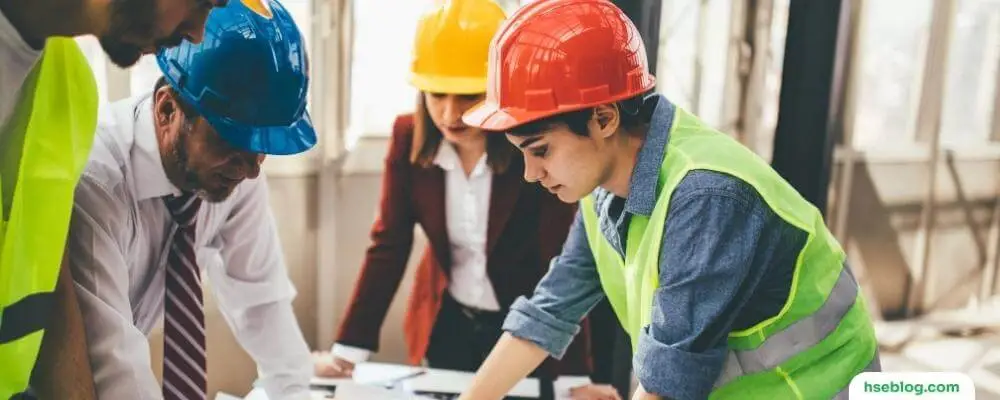
11. Build Teamwork
Toolbox talks can build teamwork by creating a shared sense of responsibility for workplace safety. By promoting open discussion and encouraging workers to speak up and report unsafe conditions, supervisors can create a culture where everyone feels comfortable working together to identify and address potential hazards.
Moreover, when workers feel that their safety is a top priority, they are more likely to feel motivated and engaged. This can lead to increased collaboration and teamwork, where workers feel empowered to work together to ensure their safety and the safety of their colleagues.
Furthermore, toolbox talks can allow workers to learn from one another and share their experiences and knowledge about workplace safety. This can help to build trust and respect among workers, leading to increased collaboration and a stronger sense of teamwork.
In addition, when workers feel that their concerns are being heard and addressed, they are more likely to feel valued and supported, leading to a more positive attitude towards their work and workplace. This positive attitude can further promote a culture of teamwork and collaboration in the workplace.
12. Improve Employee Engagement
Toolbox talks can improve employee engagement by demonstrating that their safety is a top priority and their opinions and concerns are valued. Workers who feel that their employers are invested in their safety and well-being are more likely to feel engaged and committed to their work.
Moreover, by encouraging open discussion and providing regular training opportunities, supervisors can help workers to feel more knowledgeable and confident in their ability to work safely. This can increase engagement and motivation as workers feel more empowered and capable.
Furthermore, when workers feel that their concerns are being heard and addressed, they are more likely to feel valued and supported, leading to a more positive attitude towards their work and workplace. This positive attitude can further increase employee engagement and motivation.
In addition, toolbox talks can allow workers to recognize and appreciate one another for their contributions to safety in the workplace. This recognition can help build camaraderie and teamwork, leading to increased engagement and motivation.
Conclusion
Toolbox talks are an essential part of any workplace safety program. Toolbox talks can help improve communication, boost morale, promote accountability, reduce accidents, enhance training, increase productivity, save money, build teamwork, and improve employee engagement by allowing workers and supervisors to discuss specific safety topics and identify potential hazards.
By implementing toolbox talks as a regular part of the workplace routine, businesses can create a safety culture and ensure that workers are properly trained and informed to prevent accidents and injuries. Ultimately, prioritizing safety through toolbox talks can lead to a more successful and sustainable workplace.

